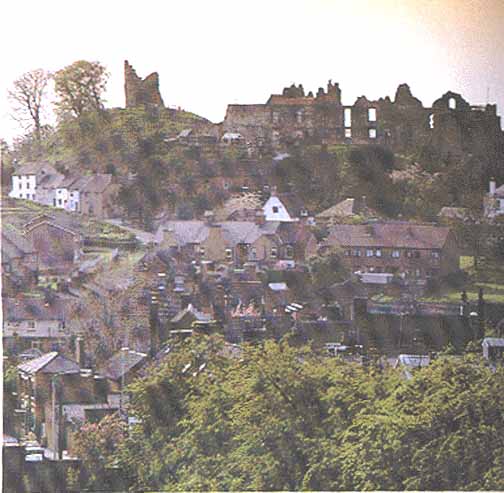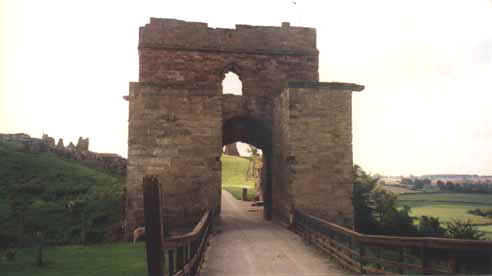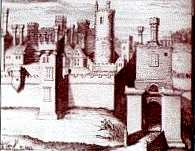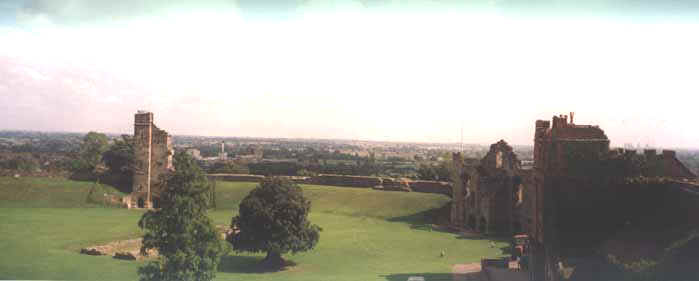 |
| Tutbury Castle lies on the site of the original Norman settlement which
was destroyed in 1174 during
a rebellion against King Henry II. Edmund Crouchback, the first Earl of Lancaster,
started the renovation
work in 1270. The fortress is situated in the small and picturesque town of Tutbury
on the banks of the river Dove in North Midlands, overlooking Hanbury and Needwood.
Only the outer part remains of what used to consist of a south tower with a winding
staircase and two chambers and the high tower in which Mary Queen of Scots was imprisoned
for a time. It is said to have been the residence of the Saxon Lords of Mercia, and is named
after the god Thor or Thoth who was worshipped at this spot. |

| 
Tutbury then
|
| "This
medieval castle, was of all her many prisons the one she hated the most. She always
maintained afterwards that she had begun her true imprisonment there, and this in itself
was sufficient reason to prejudice her against it; but Tutbury quickly added evil
association of its own to combine with her innate distaste. The castle, which was
large enough to be more like a fortified town than a fortress, occupied a hill on the
extreme edge of Staffordshire and Derbyshire from which the surrounding country could be
easily surveyed. Since the early sixteenth century, the structure originally built
by John of Gaunt had been virtually falling down, and as a Dutch surveyor reported in
1559, only indifferently repaired, hence the powerful need to bring hangings and
furnishings from Sheffield. Not only was Tutbury in many parts ruined but it was
also extremely damp, its magnificent view of the Midlands including a large marsh just
underneath it from which malevolent fumes arose, unpleasant enough for anyone and
especially so for a woman of Mary Stuart's delicate health. |
 |
| Inside the castle with a view of the south tower. |
 |
| The Mary tower on the right hand side. |
"Later on, when Mary had
reason to know full well the evils of Tutbury, she wrote of its horrors in winter, and in
particular of the ancient structure, mere wood and plaster, which admitted every draught -
that "méchante vieille charpenterie", as she put it, through which the wind
whistled into every corner of her chamber. As for the view, Mary herself, described
Tutbury as sitting squarely on top of a mountain in the middle of a plain, as a result of
which it was entirely exposed to all the winds and "injures" of heaven.
Mary was first under the supervision of the Shrewsburys but, when domestic trouble
broke out between the Earl and the Countess, Elizabeth sent Sir Ralph Sadler to replace the Earl
as Mary's guardian.It is at this point that an unpleasant incident occurred at Tutbury.
A certain Humphrey Briggs, seeking revenge against his master for having been dismissed, reported
to Sadler that his master, together with his secretary Rowland Kitchyn, were hearing Mass in secret.
Sadler, fearing yet another Catholic plot to free Mary, called Kitchyn who admitted that he was a Catholic.
Sadler then forced him to attend Tutbury Chapel everyday. Kitchyn is said to have strangled himself in his
cell fearing that he would be put under torture and forced to incriminate his master. His body was hung from
the turret which faced Mary's window as a warning. |
 |